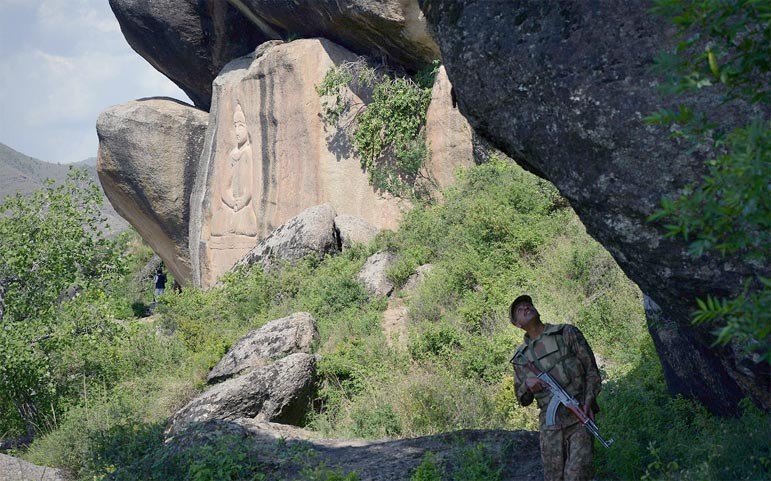
Nearly 200 checkposts have been phased out in the valley, trout farms are back in action and hotels along the Swat River are beginning to see full occupancy

I went to Swat in 2011 but could not see the majestic valley in full bloom then. The reason was that at the time the valley exhibited signs of the operation against militants carried out in 2009 as well as of the devastating floods of 2010. The people of Swat, who have the reputation of being hospitable to the core, did not appear as forthcoming in those days and avoided getting too candid with strangers.
As years passed, I was delighted to know that things were returning to normalcy. I also got an update that the road and building infrastructure, damaged during the militants’ occupation, military operation and floods, had been repaired to a great extent. The fact that the trout farms - allegedly destroyed by militants who poured poisonous chemicals into them as well as by the floods - had been restored was no small attraction for me.
Starting from Lahore via motorway, after a smooth travel for a good five hours, we took the exit from Rashakai interchange on Islamabad-Peshawar Motorway near Mardan. We were on a road that was narrow and full of vehicular traffic with human settlements appearing after short distances. Travelling to Swat was like going down the memory lane as little had changed, the ordeal could still deter the casual tourist. It takes around six hours to cover this distance because the towns and cities along this road have grown in a linear pattern with commercial and residential areas both located close to the main road. The towns include Takhtbai, Jalala, Shergarh, Sakhakot, Dargai, Barikot and Batkhela.
The first major surprise was when we reached Bab-e-Aman (Door to Peace) built at the entry to Malakand Division that houses Swat Valley. The Malakand district was the place where militants had exerted main control. All of us had to provide our CNICs for entry in registers and explain our identity and purpose of visit to the personnel of the Pakistan Army.
I feared we would be stopped repeatedly during the rest of the journey and while moving around in Swat Valley. However, to our sheer surprise we did not come across many pickets, in stark contrast to 2011, when I had to keep holding my CNIC most of the time. During an interaction with locals later on, we were told that 200 pickets had been removed from the valley over the last six months or so.
The other noticeable change was that people were more upbeat. Some men I talked to in Mingora were expecting a huge influx of tourists after the opening of the Swat Expressway in May, and were managing resources to scale up their businesses.
The hotels that were damaged by shelling etc. had been repaired and were housing guests. Many hotels had sprung up close to the bank of Swat River in Fiza Ghat in Mingora where the main attraction for the guests was to see the river from their rooms or balconies. Eight years ago, the hotel owners were offering free stay to visitors but now it was encouraging to see "Fully Occupied" status displayed by some. The recovery of damaged hotels and destroyed trout farms is attributed also to the compensation received from international donors like the USAID.
It was great visiting the Swat Museum in Mingora which was closed during my last visit. Some time before the launch of the military operation, artefacts from here had been moved to Taxila. I was allowed entry after buying an entry ticket for Rs10 but the staff demanded Rs300 in I case I wanted to take photographs inside the museum. I also visited the remains of Butkara and the Budhist Stupa.
I could not travel to places like Madyan, Miyandam and Bahrain due to heavy rains and snowfall. I inferred that road infrastructure was crucial to bringing tourists here. Unfortunately, the Bahrain-Kalam Road was as bad as it was in 2011. Malam Jabba resort has been rebuilt and so is the hotel building that had been razed to the ground by aerial bombing. The militants who had occupied it and made it their base were buried in this building. There are beautiful valleys beyond Kalam that are jewels of Swat. Some people reach these places on hired jeeps or on foot but better roads are needed so people can reach these spots in their private cars.
One piece of good news is that the 81-kilometre long Swat Expressway that will have a 1300-metres-long twin tunnel will make travel far easier, shorter and safer. Bypassing all congestions on the older route, people will take an exit from Colonel Sher Khan Interchange on M1 and reach Chakdara. It is also expected that the road to Kalam will be finished by December this year.